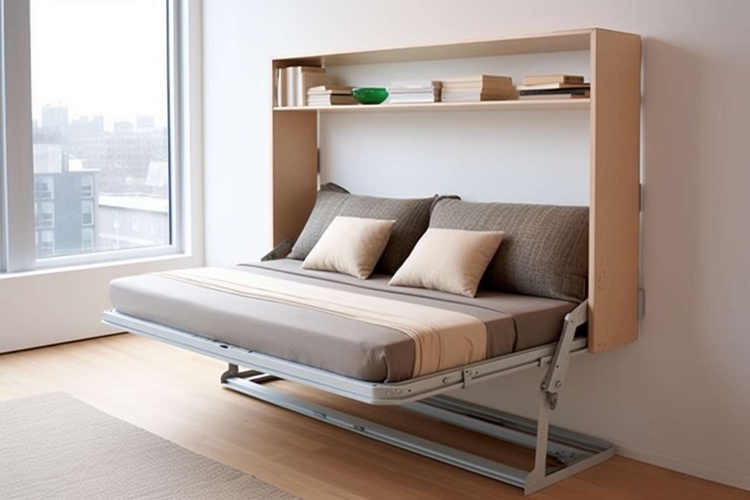Title: Micro-Apartments: Maximizing Urban Living in Minimal Spaces
The urban housing landscape is undergoing a transformation, with micro-apartments emerging as a solution to space constraints and affordability challenges in major cities. These compact living spaces, typically under 400 square feet, are redefining the concept of home for many city dwellers. As property prices soar and urban populations grow, micro-apartments offer a unique blend of location, functionality, and financial accessibility. This trend is reshaping real estate markets, influencing design innovation, and challenging traditional notions of what constitutes a desirable living space.

The concept draws inspiration from the efficiency apartments of the 1920s and 1930s, which were designed to provide affordable housing options during periods of rapid urban growth. Today’s micro-apartments, however, leverage advanced design techniques and smart technology to maximize livability in minimal square footage. This evolution reflects a broader societal shift towards minimalism, sustainability, and experiential living over material possessions.
Design Innovations: Making the Most of Every Square Inch
Micro-apartments challenge architects and interior designers to rethink spatial organization and functionality. Every element in these compact homes must serve multiple purposes. Designers employ various strategies to create the illusion of space and enhance livability:
-
Multifunctional furniture: Murphy beds that fold into walls, convertible sofas, and dining tables that double as work desks are staples in micro-apartments.
-
Vertical space utilization: High ceilings allow for loft beds, overhead storage, and vertical gardens, maximizing the three-dimensional potential of the space.
-
Smart storage solutions: Built-in cabinets, under-floor storage, and modular shelving systems help residents organize their belongings efficiently.
-
Open floor plans: Removing internal walls creates a sense of spaciousness and allows natural light to penetrate throughout the apartment.
-
Technology integration: Smart home systems control lighting, temperature, and even movable walls, adapting the space to different needs throughout the day.
These design innovations not only make micro-living possible but also inspire broader trends in space-efficient design across the real estate industry.
Economic Implications for Real Estate Markets
The proliferation of micro-apartments is having significant economic impacts on urban real estate markets:
-
Increased housing density: Micro-apartments allow developers to create more units within a given space, potentially easing housing shortages in high-demand areas.
-
Affordability for renters and buyers: While the per-square-foot cost may be higher, the overall price or rent for a micro-apartment is often more attainable for young professionals and first-time buyers.
-
Higher yields for investors: The ability to create more units in prime locations can lead to higher overall returns for property investors.
-
Shift in valuation metrics: Traditional price-per-square-foot calculations are being reevaluated as the market recognizes the premium placed on location and efficient design.
-
Impact on surrounding neighborhoods: The influx of micro-apartment residents can revitalize areas, boosting local businesses and potentially driving up property values.
As micro-apartments gain traction, they’re reshaping investment strategies and forcing a reconsideration of zoning laws and building codes in many cities.
Challenges and Criticisms
Despite their growing popularity, micro-apartments face several challenges and criticisms:
-
Livability concerns: Critics argue that such small spaces may negatively impact mental health and well-being, especially for long-term residents.
-
Regulatory hurdles: Many cities have minimum size requirements for residential units, necessitating zoning changes to accommodate micro-apartments.
-
Infrastructure strain: High-density micro-apartment buildings can put pressure on local utilities, transportation, and public services.
-
Social implications: There are concerns that micro-apartments may lead to transient communities and reduce social interaction among residents.
-
Market saturation: Some worry about the potential for oversupply in certain markets, which could impact property values and rental rates.
Addressing these concerns requires collaboration between developers, city planners, and community stakeholders to ensure that micro-apartments contribute positively to urban environments.
Future Prospects and Market Outlook
The future of micro-apartments looks promising, with several trends indicating continued growth:
-
Technological advancements: Innovations in smart home technology and space-saving furniture will further enhance the livability of micro-units.
-
Sustainability focus: Micro-apartments align with growing environmental consciousness, offering energy-efficient living with a reduced carbon footprint.
-
Changing demographics: As millennials delay marriage and childbearing, and as the population ages, demand for smaller, more manageable living spaces is likely to increase.
-
Urban planning initiatives: Many cities are exploring micro-housing as part of broader strategies to address housing affordability and urban density challenges.
-
Flexible living arrangements: The rise of remote work and digital nomadism may drive demand for short-term, furnished micro-apartments in prime urban locations.
However, the long-term success of micro-apartments will depend on their ability to adapt to changing resident needs and broader economic conditions. Developers and investors must stay attuned to market preferences and regulatory landscapes to capitalize on this evolving segment of the real estate market.
In conclusion, micro-apartments represent a significant shift in urban living paradigms. As cities grapple with housing affordability and space constraints, these compact dwellings offer a creative solution that challenges traditional notions of home. While not without controversies, micro-apartments are likely to play an increasingly important role in shaping the future of urban real estate markets, driven by innovative design, changing demographics, and the ongoing quest for sustainable, efficient living spaces in the heart of the world’s most dynamic cities.




